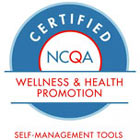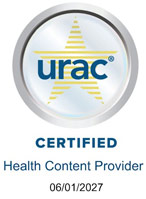Acne can be a long-term (chronic) condition. But even if it occurs only during the teen years, it can leave lifelong scars. Acne scars can be sunken (depressed) due to the loss of tissue. They may look like ice pick pits. They can be rolling, creating a wavy texture in the skin or they may also be boxlike. These are sometimes called boxcar acne scars and are often on the face. Acne scars can also be raised due to excess tissue in the form of a keloid or hypertrophic scar. These are more common on the back and chest. Lastly, acne can leave colored spots. These spots can be purplish, red, and pink in lighter skin. They can be tan to dark brown in darker skin. These are technically not scars and will often fade over time.
Treatment for acne scars
Your healthcare provider will determine specific procedures to minimize your acne scars based on:
-
Your age, overall health, and medical history
-
Severity of the scar
-
Type of scar
-
How well you handle certain medicines, treatments, or therapies
-
Your opinion or preference
Proper treatment for acne may help minimize scarring. But some procedures may help to further minimize any acne scars. These procedures include:
-
Dermabrasion. This treatment may be used to minimize small scars, minor skin surface irregularities, surgical scars, and acne scars. It involves removing the top layers of skin with an electrical machine that scrapes (abrades) the skin. As the skin heals from the procedure, the surface looks smoother and fresher. You will typically need 5 to 7 days at home to recover. Microdermabrasion is a less invasive option, but it works less well. It's done in a series of treatments that don’t require the same downtime.
-
Chemical peels. Chemical peels are often used to minimize sun-damaged skin, irregular color (pigment), and superficial scars. The top layer of skin is removed with a chemical applied to the skin. By removing the top layer, the skin regenerates. This often improves its appearance. Recovery time depends on the strength of the chemical used.
-
Dermal filler injections. These are injected under the skin to replace the body's natural collagen that has been lost. Injectable dermal fillers are generally used to treat wrinkles, depressed acne scars, and facial lines. Most fillers are short-term (temporary). They last about 6 to 18 months.
-
Laser resurfacing and light therapies. Laser resurfacing uses high-energy light to burn away damaged skin. It may be used to minimize wrinkles and fine scars. A pulsed dye laser may be used to specifically treat raised acne scars. For lighter-skinned people, intense pulsed light may be another treatment option.
-
Punch grafts. Punch grafts are small skin grafts used to replace scarred skin. A hole is punched in the skin to remove the scar. This is then replaced with unscarred skin (often from the back of the earlobe). Punch grafts can help treat deep acne scars.
-
Subcutaneous incision. A surgical probe is used to separate the skin and scar tissue. This will stop the deep scar tissue from pulling downward on the skin. Over time, it will raise the surface of depressed acne scars.
-
Autologous fat transfer. This treatment uses fat taken from another site on your own body and injects it into your skin. The fat is placed under the surface of the skin to raise depressed scars. This method is used to correct deep contour defects caused by scarring from nodulocystic acne. The fat may be reabsorbed into the skin over a period of months. So the procedure may need to be repeated.
-
Injections. These are often called intralesional injections. These involve injecting a medicine, usually a steroid, directly into a raised scar. This causes the scar to flatten and soften. Multiple treatments are usually needed.
-
Cryotherapy. This treatment freezes scar tissue, causing it to die and eventually fall off. Sometimes this is used in combination with intralesional injections. One possible risk of cryotherapy is lightening the skin. This makes the treated area lighter than the nearby skin.
-
Topical creams. Creams with retinoids or silicone can also help reduce the appearance of scars.

